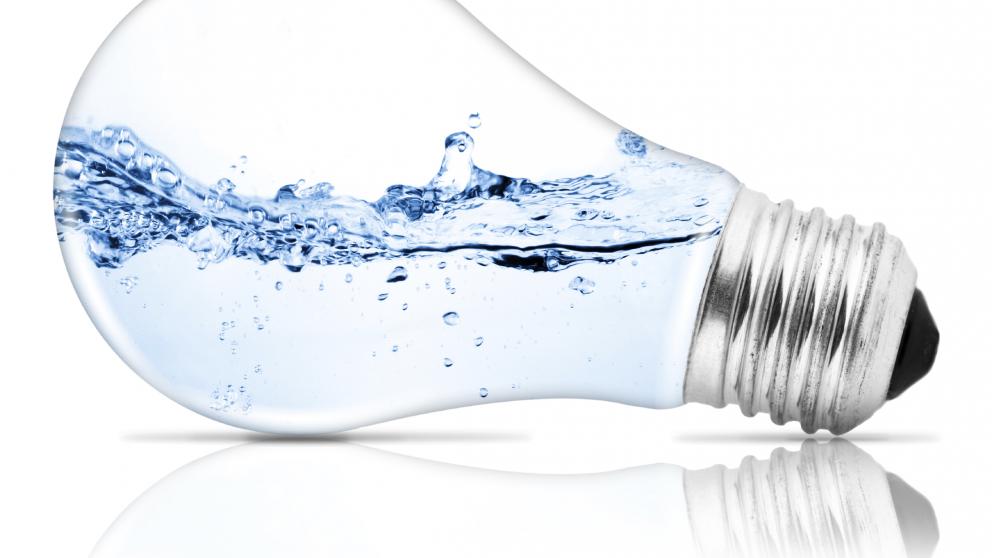Precious Resources: The IASS Discusses Sustainable Water and Energy Use during World Water Week
08.09.2015
Water-Energy Nexus

Water is of utmost importance – both for human survival and for sustainable development on our planet. As a result of population increase and economic growth, there is an ever greater demand for this precious resource. If we do not dramatically alter our water usage, by 2030 the demand for water will be 40 percent higher than the amount actually available. One reason for this is energy supply, which requires large amounts of water—a total of some 580 billion cubic meters per year worldwide. This is equivalent to 15 percent of all freshwater withdrawal; after agriculture, the energy sector is the highest user of water.

Integrated governance and management strategies for water and energy were the topic of a panel discussion on 24 August co-hosted by the IASS, the International Renewable Energy Agency (IRENA), and the Thirsty Energy Initiative of the World Bank during World Water Week in Stockholm. In her introductory remarks, Sybille Röhrkasten, researcher with the IASS’s Transdisciplinary Panel on Energy Change, emphasised the importance of the water-energy nexus for the Sustainable Development Goals (SDGs) that UN member states will adopt in late September in New York. “Unlike the preceding Millennium Development Goals, the SDGs comprise goals on both water and energy. If governments around the world agree on this set of goals, they will have to deal with interdependencies, which increases the awareness of and the necessity for integrated governance and management,” she noted.
During last year’s World Water Week, the IASS highlighted the technical and economic potential of renewable energy technologies for generating electricity with little water inputs, Dominik Schäuble reminded panel attendees. As in 2014, Schäuble, the deputy leader of the Transdisciplinary Panel on Energy Change, once again moderated the discussion. “This year we turned our attention to the question of how this potential can be applied in practice through integrated water and energy management practices,” he said.
Sybille Röhrkasten considered these questions more concretely in her presentation: what are the action implications of the water-energy nexus? To what extent are more integrated governance and management of these two resources necessary and feasible? What might be suitable entry points for getting the energy sector on board? The last question is particularly important, Röhrkasten said, because although “nexus thinking” is already well established in the water sector, it has proved relatively difficult to engage the energy sector. She suggested that this was due to the fact that the water sector is politically and economically in a much weaker position than the energy sector.
Diego Rodriguez from the World Bank’s Thirsty Energy Initiative presented a pilot project in South Africa in which water costs are integrated into energy planning. When water is assigned a price, conventional water-cooled power plants become less attractive in the future electricity system. Instead, power plants with air cooling and solar energy plants become more important – they are more appropriate in arid regions which lack water but have an abundance of sunshine. After much discussion in recent years about the reasons why it is necessary to integrate water and energy management, it is time to start considering its application in actual practice, Rodriguez argued.
Divyam Nagpal from IRENA presented the results of a recent study on “Renewable Energy in the Water, Energy & Food Nexus”, highlighting that renewable energy can make an important contribution to water and energy security. Solar and wind technologies, for example, are significantly less water-intensive compared to conventional technologies. Furthermore, in arid regions renewables can improve access to water, for example, through the installation of solar-power pumps. In a world in which 1.6 billion people don’t have adequate access to water due to a lack of necessary infrastructure, such technologies are becoming increasingly important. Guillermo Bravo from the Spanish company Abengoa presented technical solutions for water and energy security. Abengoa is active in many water-scarce regions of the world. It has established desalinisation facilities and technologies that are capable of producing electricity without requiring much water.
The water-energy nexus is a research focus of the IASS’s Transdisciplinary Panel on Energy Change. The institute and its partner organisations aim to increase the awareness of this topic in the energy sector. Thus the IASS looks forward to upcoming activities, such as a side event at the South African International Renewable Energy Conference entitled “Towards Sustainable Energy Security in a Water-Constrained World.” Partner organisations are the Thirsty Energy Initiative of the World Bank, IRENA, and Greenpeace Africa.
07.09.2015